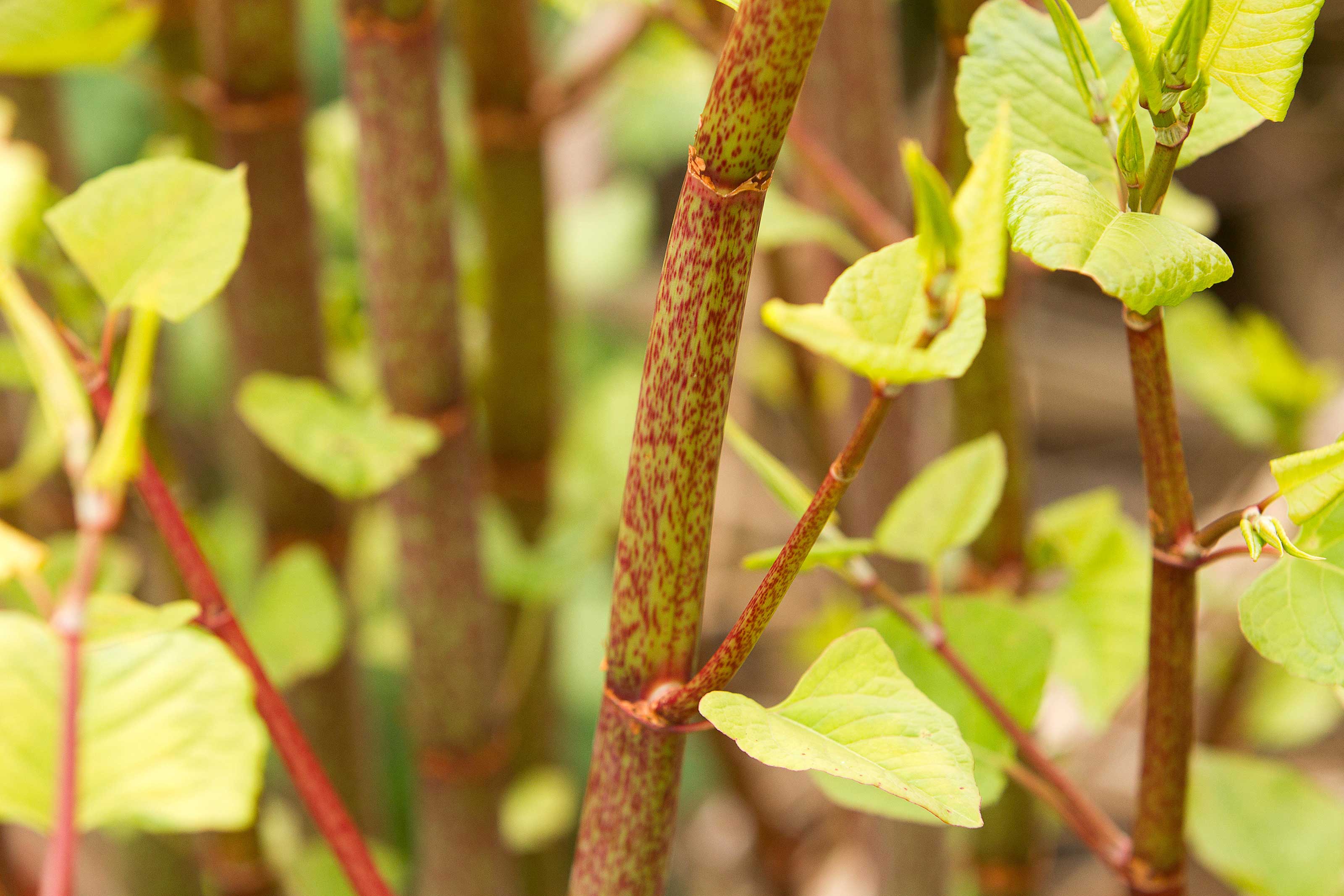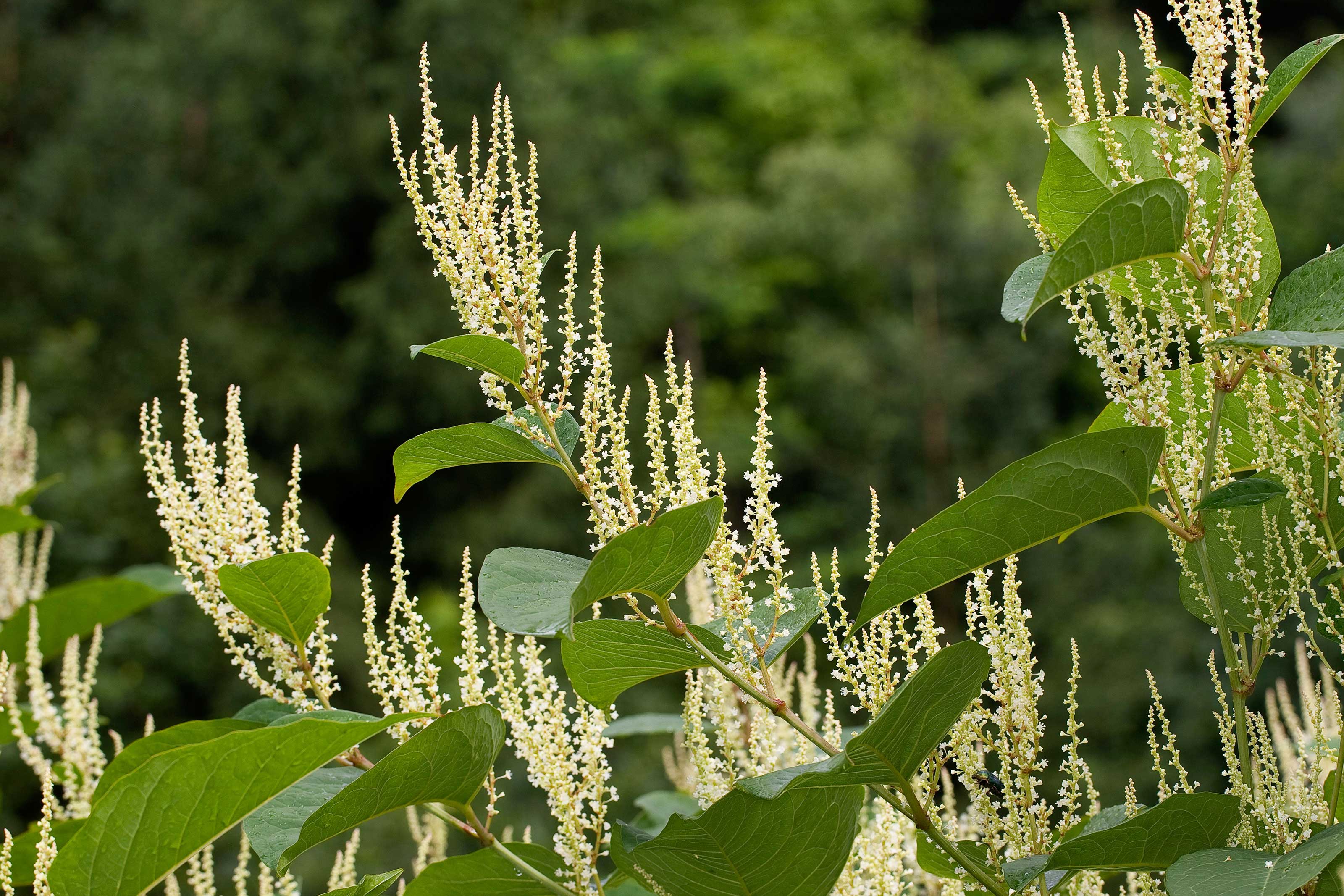Japanese knotweed guide: how to remove it and stop it from spreading
If your garden has Japanese knotweed, knowing how to remove it and stop it from spreading will be at the forefront of your mind. Find out everything you need to know


Wondering how to remove Japanese knotweed and stop it from spreading? It's one of the peskiest weeds out there, so if you spot it growing in your garden, you'll want to act fast.
It's no walk in the park, however. First of all, Japanese knotweed is infamously difficult to eradicate. The reason behind this is that it can grow from even a tiny fragment of rhizome (the underground root system), and it grows fast. What's more, even if you cut it down or dig it up, it's classified as 'controlled waste'. In the majority of cases, this means you can't just pop to your local tip to get rid of it. And in the UK at least, disposing of it in the wild is against the law and taken very seriously.
But why is it so bad? Well, when we say it's invasive, we mean it's really invasive. We're talking a growth-rate of 10cm a day in summer. And this force takes little mercy on its surroundings, so if your home's foundations are a little cracked, or your pipes are a tad weak, then this weed will take advantage, causing substantial damage. Of course, you probably don't want it tearing through your garden borders or flowerbeds, either. It's no surprise that many regions also have laws stating that you need to declare its presence when selling your home.
So without further ado, we've got everything you need to know when it comes to dealing with Japanese knotweed, including how to remove it and stop it from spreading. Read on to find out more, and then take a look at our weed control tips and tricks for more weed-busting solutions.
How do you identity Japanese knotweed?

First things first – you need to know what exactly you're looking for. For starters, it's important to remember that Japanese knotweed is a perennial. So, over the winter months, it'll be much trickier to spot unless canes have already been established. However, once the weather warms, keep a look out for these characteristics:
- Japanese knotweed has dense stands of canes, similar to bamboo. These have purple-red flecks, leaves from nodes along their length, and in summer, can grow up to a whopping 7ft tall. To catch them beforehand, look out for reddish-purple shoots growing from crimson-pink buds at ground level, advises the RHS.
- The leaves are heart-shaped and long – up to 14cm in length – and follow a zig-zag pattern along the stems. These stems die back during winter, but, as the RHS says, the canes remain for several months.
- Japanese knotweed also produces long, creamy-colored flower tassels in summer into autumn.
It's worth noting that there are a few species that look very similar to Japanese knotweed and are often confused with it, including the Russian vine and the Himalayan honeysuckle. Although they are unable to accept plant samples, RHS Gardening Advice can help RHS members to identify Japanese knotweed via images.
How to remove Japanese knotweed and stop it from spreading using weed killer

Japanese knotweed can take up to five years to eradicate from your garden with domestic weed killer. Because of this, and the disposal problems, it's highly recommended to hire a professional to take care of the problem for you. They will have access to stronger solutions which can reduce the time it takes and will be able to take away waste without problems. Bear in mind that it can be costly depending on how much has already grown – compare a few quotes before you proceed.
However, if you are keen to give it a go yourself, take a look at the steps below:
- Make sure you've identified your plant correctly.
- Choose the right time of year – the best time to apply weed killer is in summer or early autumn, when the plant is in leaf.
- Purchase a suitable weed killer. You'll need something strong to do this job, ideally one that is glyphosate-based. Look for types that have Japanese knotweed listed on the label, such as Roundup Tree Stump.
- Protect yourself from the strong chemicals with suitable clothing, including gloves and eye-protective goggles.
- Carefully follow the instructions on the packet. These can vary, but will usually include spraying the weed killer solution onto the plant's leaves or cut canes. Be careful of your surroundings and avoid getting the chemical on other plants or on your lawn ideas.
- Be patient. Remember that it can take a good few years for this process to take effect.
- Avoid the urge to dig it up. This can break up the rhizomes, causing even more plants to grow and making the problem much, much worse. For severe infestations of Japanese knotweed, a professional team can be hired to excavate the whole area.
What should I do if my neighbor has Japanese knotweed?

It's one thing if your own garden has Japanese knotweed. But what happens if you spot it growing in your neighbor's yard? If you're watching it hurtle towards your garden fence ideas in mild horror, then there are some steps you can take to approach the problem:
- Remember, it's generally not illegal to have Japanese knotweed in your garden. However, any homeowner should take active steps to solve the issue to stop it from getting out of hand and affecting their neighbors.
- The RHS suggests to start off by directly speaking to your neighbors about the problem. They may already be addressing it, or perhaps they are unaware entirely. Get to grips with the situation informally, before taking further steps.
- If no action is taken, you may wish to contact your local council for advice.
Can I burn Japanese knotweed?

When learning how to weed a garden, you might be tempted to simply burn the lot. True, setting fire to your Japanese knotweed problem may seem like a satisfying solution, however it's not recommended as there's a world of risk attached. Even if your local council allows it, fires can easily get out of hand, causing danger to not only you but also to your neighbors. What's more, it's often ineffective at destroying the rhizomes.
If you're set on attacking the weed with fire, hire an expert to incinerate it professionally. There will be much more chance of success, and less chance of danger.

The garden was always a big part of Holly's life growing up, as was the surrounding New Forest where she lived. Her appreciation for the great outdoors has only grown since then. She's been an allotment keeper, a professional gardener, and a botanical illustrator – plants are her passion.
